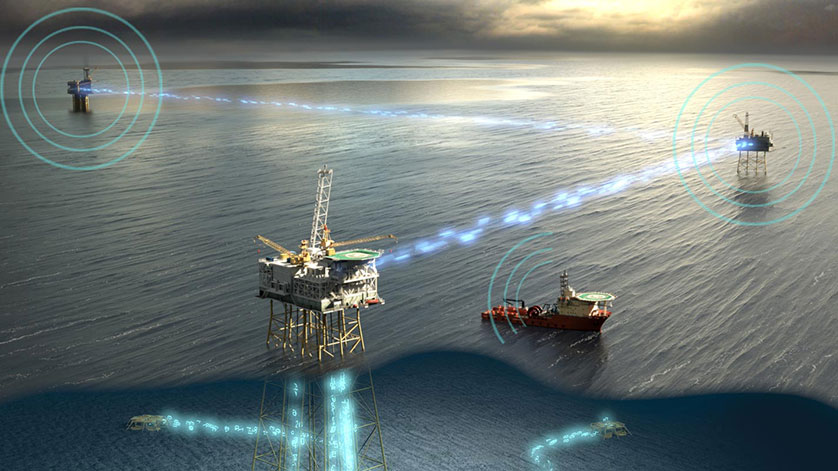Tampnet Installs the First Offshore 4G LTE Base Station in Gulf of Mexico

Tampnet has announced that they have installed the first ever operational offshore 4G/LTE base station in Gulf of Mexico (GoM).
This adds to their current offshore coverage gained from 5 base stations placed on telecom towers in the coastal areas of Texas, Mississippi and Louisiana. Tampnet will also have 6-8 more base stations installed within the next few weeks. Inside of 18 months, Tampnet will have 60+ base stations operational, covering nearly 96,526 square miles and 98% of all manned offshore assets in the GoM with 4G LTE service. This includes the deepwater region.
Tampnet is building a cutting edge full scale carrier grade 4G/LTE system in the GoM, with geo-redundant EPC cores as well as distributed core equipment offshore. This enables a communications reliability that has never been seen in the GoM before, and enables new and innovative ways of operating offshore platforms increasing productivity, safety, environmental response and welfare for the offshore industry and workforce. Copying its model and infrastructure from the North Sea, Tampnet will carry the traffic from the base stations to shore on a robust and redundant, low-latency core infrastructure based on carrier grade, microwave radio links and a redundant fiber infrastructure in the deepwater region.
The 4G LTE coverage will enable a number of new ways of working for an industry that has, since the significant drop in oil prices, been focused on using new technology to operate more efficiently and safely. Tampnet’s service will enable such solutions and bring operating efficiencies to new areas.
“We are excited with our aggressive roll-out strategy in the Gulf”, says Per Helge Svensson, the Tampnet CEO. “We have spent a long time preparing for this game-changing technology shift in the Gulf, replacing high latency VSAT and mobile-unfriendly, low bandwidth WiMAX systems that have been used in the GoM in the past. Also, we are basing our network core infrastructure on fiber and microwave – which nobody else can match”, he adds. “We have significant experience in building LTE offshore from the North Sea and an excellent partner who we will continue working with to develop a new technology ecosystem in the Gulf that is future proof, enables very high bandwidths and can be utilized by the industry. We expect rapid growth in the Internet of Things (IoT) and Narrowband LTE spheres in the coming years and will make sure that the coverage is there to support these exciting new technologies. This technology shift will enable the O&G and maritime industry to increase the efficiency and overall safety in the GoM”.
Tampnet operates the largest offshore high capacity communication network in the world and serves more than 240 O&G platforms, Floating Production Storage and Offloading units (FPSOs) and exploration rigs in the GoM, as well as on the Danish, Norwegian and the UK continental shelves of the North Sea. In total, Tampnet owns and operates a redundant offshore infrastructure network based on 2,500km of subsea fiber optic cable in the North Sea, complemented with a large number of high-capacity, carrier grade radio links and a high number of 4G base stations.

